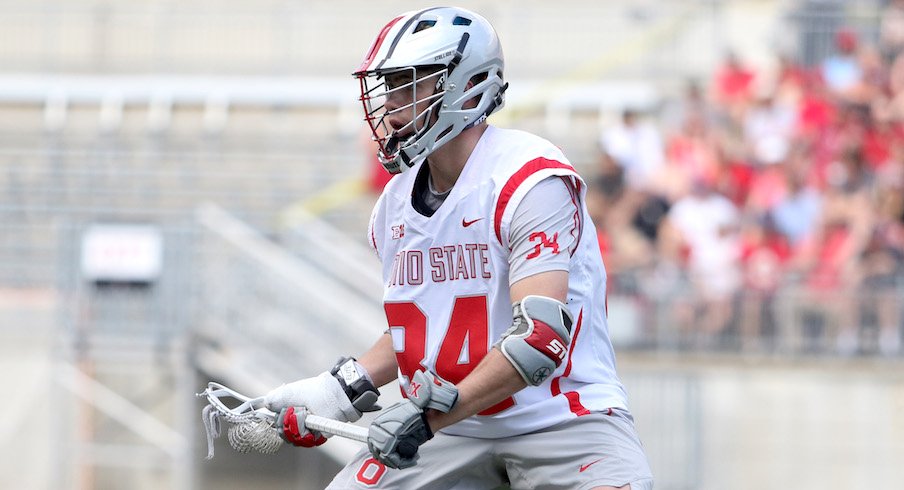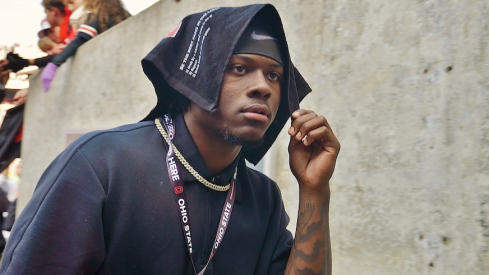Among the 70 Ohio State spring sports athletes whose senior years were cut short due to the coronavirus pandemic, nearly half of them will be staying at Ohio State for an NCAA-approved extra year of eligibility.
Ohio State athletic director Gene Smith said Friday that 31 of the 70 spring sports athletes who were set to complete their collegiate careers have opted to return for one more year, while the other 39 have decided to move on to start their professional lives or attend graduate school elsewhere.
Every Ohio State spring sports athlete was offered the opportunity to return for an additional year after the NCAA’s Division I Council voted on March 30 to allow schools to provide an extension of their eligibility. While some schools decided not to provide financial aid to those athletes – and others, like Wisconsin, are simply telling their seniors to move on – Ohio State committed to continue providing the same level of financial aid as this year to any seniors who wanted to return.
At the same time, coaches from those sports teams encouraged their seniors – almost all of whom do not receive full scholarships – to weigh their options and make the best decisions for themselves based on their financial situations and the opportunities they might have both within and outside of Ohio State.
“I think there’s a lot that goes into it, it’s very personal to each young man and family, and I think as coaches, we’re working really hard to making sure that we’re putting their best interest first,” Ohio State men’s lacrosse coach Nick Myers said after the NCAA’s decision was finalized. “If their best interest is going and taking a full-time job, we’re encouraging that, even if that means a competitive loss for us. We can’t in good faith tell a young man to come back and take on more debt, as much as he’d love to suit up one more year for the Buckeyes, in times like this.”
Now that those decisions have been made, Ohio State has to adjust its budget accordingly to account for financial aid for those seniors, which will not count toward the standard scholarship limits for their respective sports for 2020-21.
Because most spring sports athletes are on partial scholarships, Ohio State’s 31 returning seniors will account for the equivalent of 14.28 scholarships, which will cost the athletic department slightly more than $630,000, according to Smith. Add in approximately $320,000 in expenses associated with those additional athletes plus around $40,000 for meals, and those additional athletes will increase the athletic department’s costs by nearly $1 million.
To make up for that, Ohio State’s spring sports teams have had to make some cuts in other areas. That said, those returning seniors will also be paying approximately $700,000 to the university in tuition and fees – since their scholarships are only partial – which adds a revenue stream, as well.
Ultimately, though, Smith and the rest of the administration felt it was important for those athletes to have the opportunity to be able to return and have a full senior season, even if that meant making some cuts in other areas.
“The night right after the decision, I had a conference call with our spring coaches, and I said, ‘Look, you guys have already made sacrifices, you’ve cut your budgets here and there, let’s talk about reality,’” Smith said in a conference call with reporters on Friday. “And I can’t compliment our coaches enough. They significantly cut their budgets.”
Not all Ohio State spring sports teams have announced which of their seniors will be returning next season, but those who are include Tre Leclaire, Ryan Terefenko and Jeff Henrick from the men’s lacrosse team, Liza Hernandez and Jill Rizzo from the women’s lacrosse team, Carley Gaskill from the softball team and Kyle Seelig from the men’s tennis team.
Smith acknowledged that Ohio State’s spring sports teams could have a competitive balance advantage over some schools because they will have additional student-athletes on scholarship for 2020-21 while others might not. He also acknowledged that if a similar situation were to impact fall or winter sports, a plan leaving it up to each school to make its own decisions on whether to provide additional scholarships might not work.
“It didn’t go to competitive balance in our conversations. Never once did that ever come up. Not one time,” Smith said regarding the Division I Council’s vote to approve an extra year of eligibility for spring sports. “We probably gain a competitive balance advantage because our kids can come back, and other schools made a different decision. I think if it was football, we’d have a different conversation, to be quite frank.”
Ultimately, though, the NCAA opted to leave the decision to provide additional scholarships for spring sports athletes to each school’s discretion, and because Ohio State is in a position to afford it, 31 Buckeyes will take advantage.
Smith acknowledged Friday that any potential impact to college football season could have a “major impact” on the finances of Ohio State’s athletic department, as Ohio State typically brings in a net revenue of $5 million to $7 million for each home football game, revenue that is directly tied to fans attending games. That said, Ohio State’s athletic department budget currently includes between $10.2 million to $10.3 million in reserve funds. Smith said Ohio State will dip into that reserve as needed to fund additional costs that could arise from the continued impact of COVID-19 on college sports.


